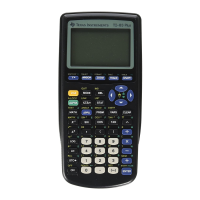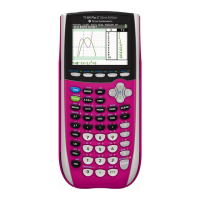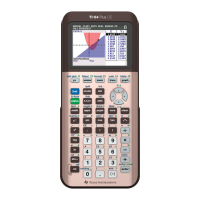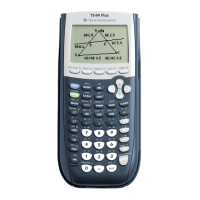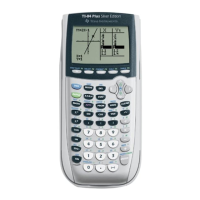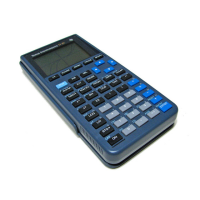
Do you have a question about the Texas Instruments TI-81 and is the answer not in the manual?
| Type | Graphing Calculator |
|---|---|
| Memory | 2.4 KB RAM |
| Processor | Zilog Z80, 2 MHz |
| Programming | TI-BASIC |
| Power Source | 4 AAA batteries |
| Release Year | 1990 |
| Display | Monochrome LCD, 96 x 64 pixels |
Outlines the four basic steps for defining a graph, with procedures detailed.
Explains how to select modes for parametric equations for optimal graphing.
Shows how to view and enter X and Y components for parametric equations.
Guides on entering X and Y components for a new parametric equation.
Details how to select specific parametric equations for graphing.
Explains setting RANGE variables like Tmin, Tmax, and Tstep for graphing.
Explains how to select a matrix (A, B, or C) to define.
Guides on accepting or changing matrix dimensions (rows and columns).
Details the process of entering values into matrix elements.
Explains how to edit existing matrix elements.
Explains the RowSwap function for swapping rows in a matrix.
Provides an example of using RowSwap to swap rows in a matrix.
Explains the Row + function for adding rows in a matrix.
Explains the *Row function for scalar multiplication of matrix rows.
Explains the *Row + function for adding scaled rows to another row.
Details storing a value to a specific matrix element.
Explains how to use matrix elements as variables in expressions.
Details storing matrix dimension variables (e.g., number of rows).
Explains using matrix dimension variables in expressions.
Introduces the STAT menus for statistical analysis operations.
Lists and describes functions available in the STAT menus (CALC, DRAW, DATA).
Explains how to enter and manage statistical data.
Guides on entering new sets of statistical data.
Explains how to edit existing statistical data points.
Explains how to calculate regression models and results.
Explains the variables available for one-variable statistics.
Explains the variables available for two-variable statistics.
Explains how to use statistical variables within mathematical expressions.
Steps before plotting statistical data, including range and function selection.
Details the process of plotting statistical data using various graph types.
Introduces the PRGM menus for program execution, editing, and erasing.
Lists and describes functions available in the PRGM menus (EXEC, EDIT, ERASE).
Explains how to select a program to enter or edit.
Explains using matrix arithmetic to solve systems of linear equations.



